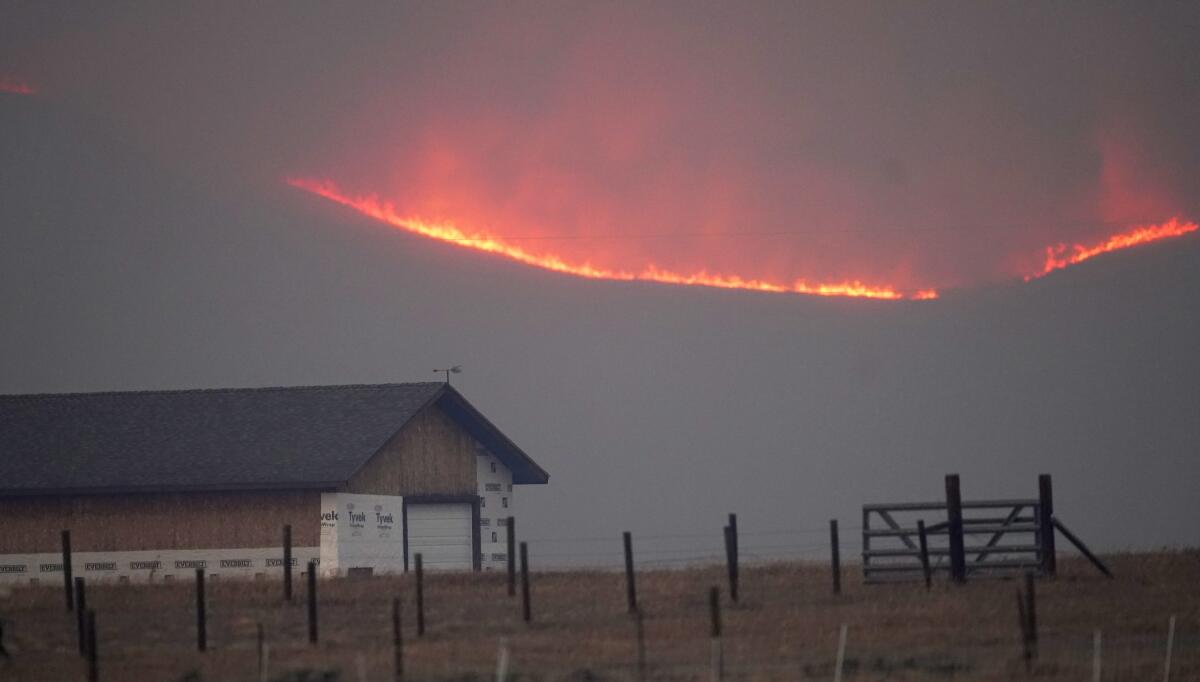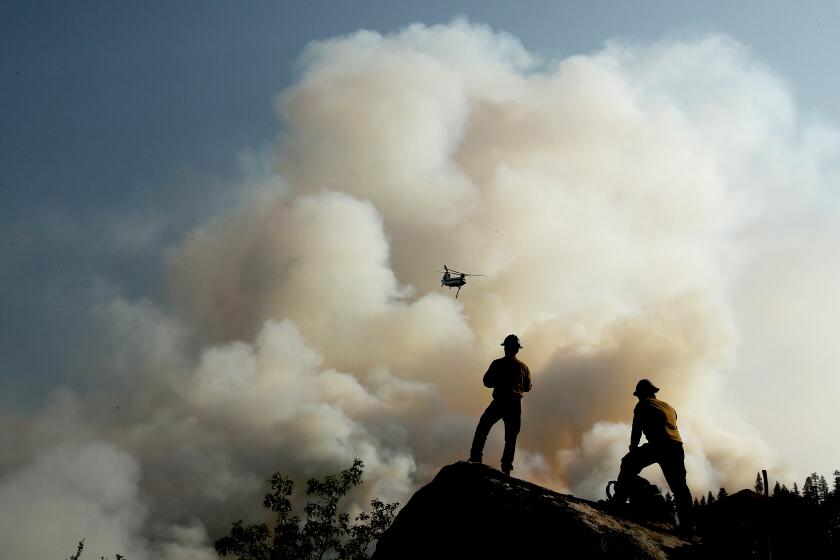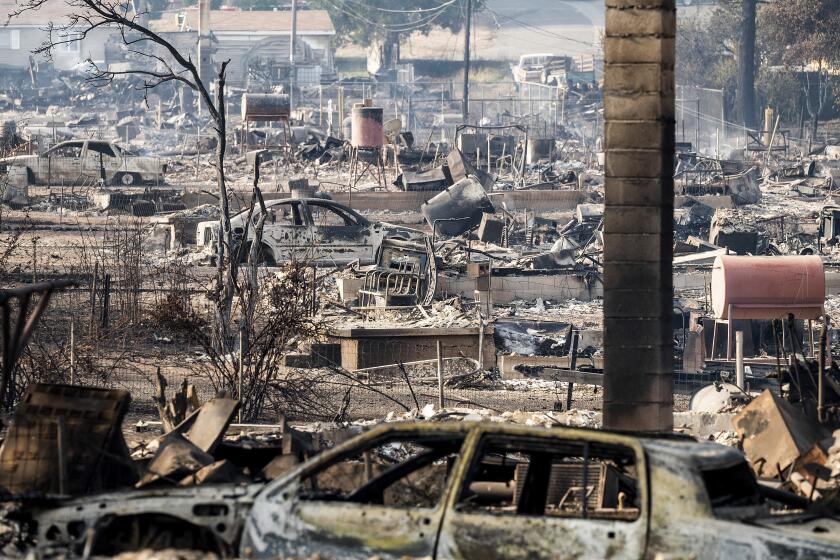Colorado lawmakers look to artificial intelligence to detect wildfires earlier

- Share via
DENVER — A year after the most destructive wildfire in the state’s history burned nearly 1,100 homes, Colorado lawmakers are considering joining other Western states by adopting artificial intelligence in the hopes of detecting blazes before they spread out of control.
A proposal that legislators will discuss Thursday would create a $2-million pilot program to mount cameras on mountaintops in high-risk locations. An artificial intelligence program developed by a private company would analyze the images and sounds from cameras within a 10-mile radius with the aim of detecting something that could signal the start of a blaze.
It is part of an ongoing effort by firefighters to use new technology to become smarter about how they prepare and better position their resources.
Fire lookout towers once staffed by humans have largely been replaced by cameras in remote areas, many of them in high definition and armed with artificial intelligence to discern a smoke plume from morning fog.
Hundreds of such cameras are scattered across California, Nevada and Oregon, many of which send live feeds to the internet
where anyone can watch them.
A historic drought and recent heat waves tied to climate change have made wildfires harder to fight in the West, and scientists say warming weather will continue to make fires more frequent and destructive. Record-breaking storms that drenched California in recent weeks and big snow dumps in other states have improved conditions in the short term, but the drought persists across most of Nevada, California and Utah, and large areas of other Western states, according to a report from the National Oceanic and Atmospheric Administration.
The goal of the Colorado program would be for cameras and an AI algorithm to detect a plume of smoke and alert first responders who can contain the blaze before it grows, said Don Coram, a GOP former state senator who first backed the idea and encouraged this year’s sponsor, Rep. Cleave Simpson, a Republican and rancher.
Nearly 17 million acres will fall under the worst ranking from the state fire marshal, a 14.6% increase since the map was last updated in 2007.
“Once these fires get into cresting in the treetops, it’s going to take a lot of resources, a lot of manpower, and a lot of good luck to knock them down,” Coram said.
Thursday’s hearing will include testimony from an AI wildfire detection company called Pano AI. The company began working with Colorado cities, including the ski resort town of Aspen, and has expanded to cities and counties in six states. Their stations include two cameras mounted on a high vantage point, rotating 360 degrees and connected to the company’s AI software. Each station costs roughly $50,000 every year, the company says.
Arvind Satyam, the chief commercial officer at Pano AI, said that the artificial intelligence uses a data set of more than 300 million images that teaches it what is smoke from a fire and what isn’t.
Once a camera signals that there could be a fire, the photos and information are run through the company’s intelligence center for human vetting — the algorithm could have mistaken a tractor’s dust cloud or a geyser for a smoke plume — before it’s sent along to fire agencies, he said.
AI has gained notoriety for breaking into a number of fields — from creating propaganda and disinformation to writing essays or cover letters about whatever the user requests.
David Blankinship, senior technology advisor for the Western Fire Chiefs Assn., said fire agencies have come to rely on this type of detection technology, especially in California, where the programs have been put to wider use.
The Mill fire in Siskiyou County destroys the historically Black neighborhood of Lincoln Heights in Weed, officials said.
“It loops around in a 360 all the time and searching for pixel changes that the human eye might not detect,” said Blankinship, adding that “anything you can do to take time out of the response to that fire saves lives.”
Still, Blankinship noted that “these cameras, even with AI, are only one component of the actual solution that is working.”
That solution includes civilians reporting fires, other equipment such as smoke sensors, aircraft that gather detailed information by flying over the burns, and even satellites providing broader information on a fire’s size, Blankinship said.
All those systems, including cameras fitted with AI, allow fire authorities to model a wildfire and consequently better make difficult decisions about where and when to evacuate residents, how many engines to dedicate to a fire, or if blazes should be extinguished at all.
To Coram, who will be attending the hearing Thursday, the bill “just makes too much sense not to do.”
“I look around at all the rooftops that I can see, and think, ‘My God, when this catches on fire what are we going to do?’” said Coram.
More to Read
Sign up for Essential California
The most important California stories and recommendations in your inbox every morning.
You may occasionally receive promotional content from the Los Angeles Times.















